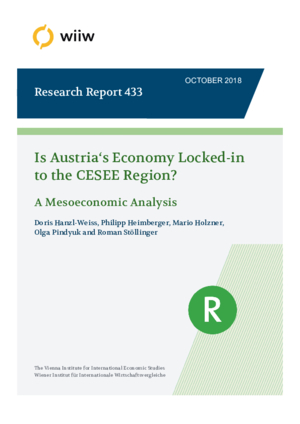Is Austria’s Economy Locked-in to the CESEE Region? A Mesoeconomic Analysis
Doris Hanzl-Weiss, Philipp Heimberger, Mario Holzner, Olga Pindyuk and Roman Stöllinger
wiiw Research Report No. 433, October 2018
61 pages including 18 Table and 26 Figures
In this paper we do a detailed analysis of Austrian gross export data at the industry level in order to detect potential trade specialisation lock-in effects vis-à-vis the countries from Central, East and Southeast Europe (CESEE). In addition we analyse Austrian global value added export development, Austrian trade in services as well as the link between industry-specific specialisation lock-in effects and foundational competitiveness of Austria. The main findings are: the Austrian global gross export market share has declined since 2004 (the year of the EU eastern enlargement) in all industries, except for pharmaceuticals and chemicals; however, Austria managed to increase its global export market share in terms of value added, primarily through an increase in price competitiveness; Austria’s CESEE potential lock-in effects have stagnated since the outbreak of the global financial crisis, with some negative effects only in the medium-high-tech industries (i.e. to a large extent the automotive sector) on Austria’s competitiveness.
Keywords: Austria, CESEE, competitiveness, international trade, manufacturing exports, services trade
JEL classification: F14, L60, L80
Countries covered: Austria, CESEE
Research Areas: Macroeconomic Analysis and Policy, International Trade, Competitiveness and FDI
